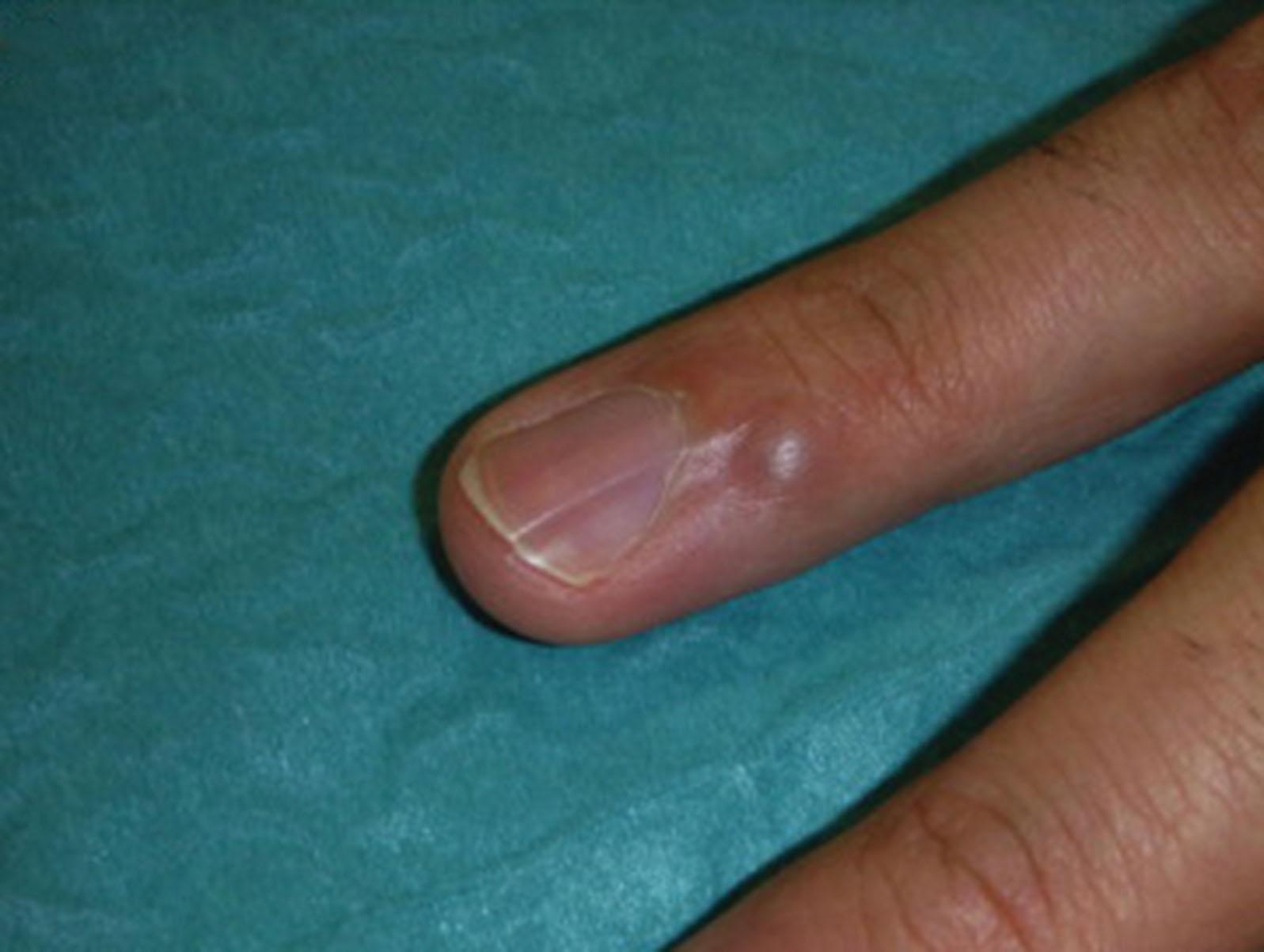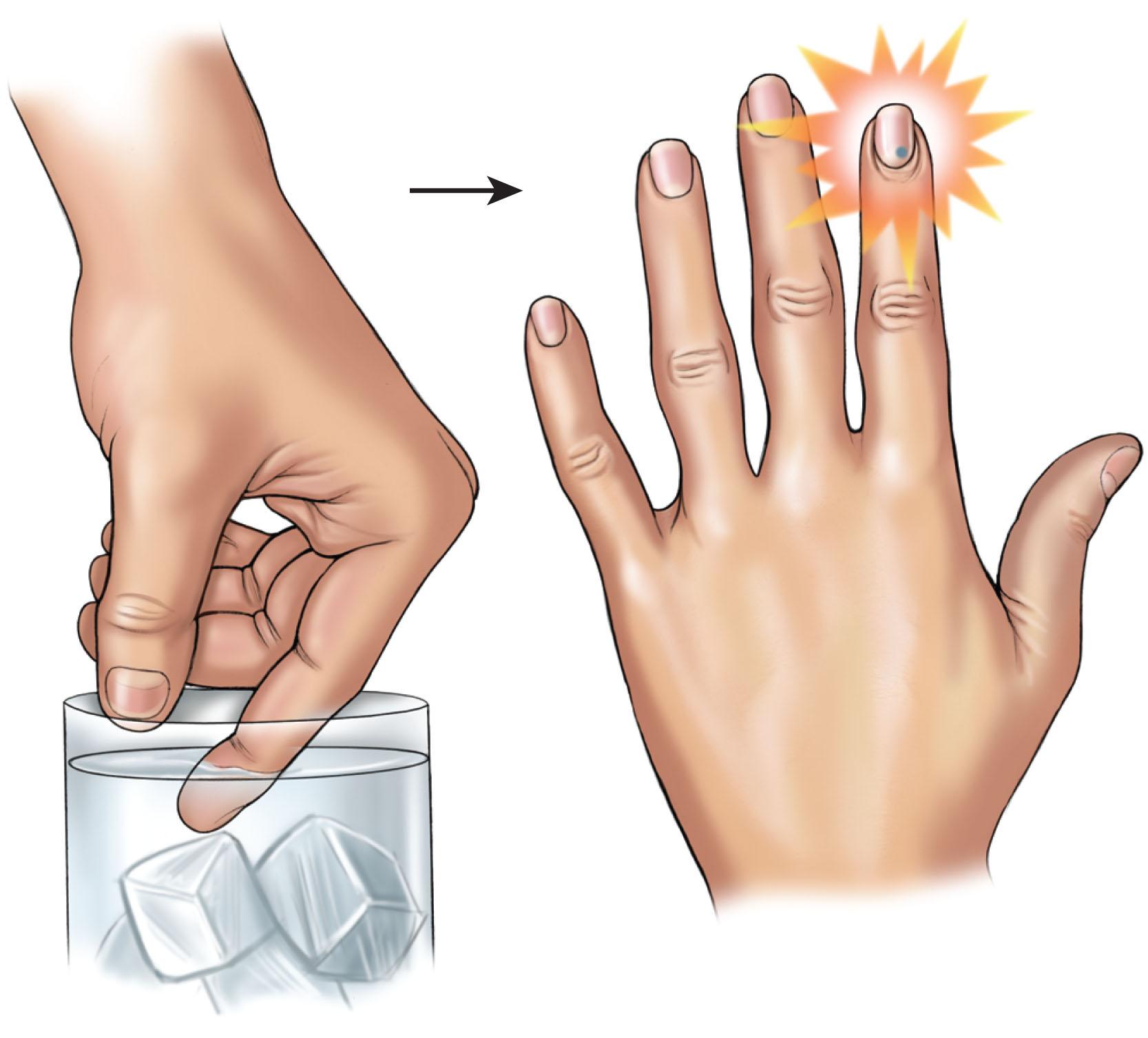Physical Address
304 North Cardinal St.
Dorchester Center, MA 02124
Learn the common causes of finger pain.
Develop an understanding of the anatomy of the digital nerves.
Develop an understanding of the unique clinical presentation of glomus tumor of the finger.
Develop an understanding of the differential diagnosis of finger pain.
Learn how to use physical examination to identify glomus tumor of the hand.
Develop an understanding of the treatment options for glomus tumor.

Vinnie Dang is a 23-year-old bartender with the chief complaint of “every time my index finger gets cold, I feel like somebody is stabbing it with a knife.” Vinnie stated that for the last couple of months, any time his right index finger gets cold, he gets a sharp, stabbing pain underneath his fingernail. “Doctor, I dread it when someone pulls the 007, as I know it’s going to hurt.” I asked, “What’s a 007?” Vinnie grinned and said, “You know, Doctor, ‘shaken not stirred.’” I must have had a blank look on my face because Vinnie laughed and said, “Doctor, when you make a martini, you put the ingredients into a cocktail shaker and you have to hold the top and bottom together with your hand as you shake it. The idea is to get the liquor super cold. Once you get it shaken, you strain out the ice as you pour it into the martini glass. Not much of a drinker, are you, Doc?” I laughed and said, “Not really, but I got the general idea.” Vinnie said, “Doctor, I consider myself a pretty tough guy. You know I was in the army right out of high school. But any time my index finger gets cold, the pain is so bad I want to cry. It really, really hurts!”
I asked Vinnie if he had experienced any pain, numbness, or weakness in either hand before this started, and he shook his head and replied, “Doc, the pain is right under my fingernail. I can see a little blue spot under the nail. And lately, the nail has gotten kind of gnarly looking. I don’t remember injuring the nail, but I guess I could have done it in my sleep.” I asked, “How is your sleep?” Vinnie said, “It’s fine. The nail is sensitive to touch, but unless I roll over on my finger, it is fine.” I asked what made the pain better, and he said, “Keeping the finger away from anything cold.”
I asked Vinnie to show me where the pain was, and he pointed to the nail of his right index finger. I could immediately see the nail deformity. I asked Vinnie about any fever, chills, or other constitutional symptoms such as weight loss, night sweats, etc., and he shook his head no. He also denied any other musculoskeletal or systemic symptoms.
On physical examination, Vinnie was afebrile. His respirations were 18, his pulse was 74 and regular, and his blood pressure was 124/76. Vinnie’s head, eyes, ears, nose, throat (HEENT) exam was normal, as was his thyroid exam. Auscultation of his carotids revealed no bruits, and the pulses in all four extremities were normal. He had a regular rhythm without abnormal beats. His cardiac exam was otherwise unremarkable. His abdominal examination revealed no abnormal mass or organomegaly. There was no peripheral edema. His low back examination was unremarkable, although flexion of the lumbar spine caused some pain in the right buttocks. There was no costovertebral angle (CVA) tenderness. Visual inspection of the nail of the right index finger revealed a small bluish discolored area and deformity of the nail ( Fig. 15.1 ). There was no rubor or color and no evidence of ecchymosis or obvious fungal infection of the nail. Pressure on the nail caused Vinnie to say, “You’re right on it, Doc! That’s it.” I performed an ice water test, which took a fair amount of convincing, and it was positive within about 15 seconds ( Fig. 15.2 ). Vinnie said, “No more of that, Doc. How about I mash your index finger with a ballpeen hammer? Because that’s how much it hurts.”


A careful neurologic examination of both the upper and lower extremities was normal. Deep tendon reflexes were physiologic throughout. “Sorry, Vinnie, I am pretty sure I know what is causing the pain, and it is pretty straightforward to fix.”
History of lancinating subungual pain with exposure to cold
Pain made worse with pressure on the affected nail
Discoloration under the nail
Nail deformity noted
No symptoms in the left upper extremity
No fever or chills
No history of recent trauma
Become a Clinical Tree membership for Full access and enjoy Unlimited articles
If you are a member. Log in here